Overload Underload Increase Bat Speed Training For Baseball & Softball | Heavy Light Wood Trainer For Sale
Discover overload and underload how to increase bat speed training for baseball and softball players in this Perry Husband from Effective Velocity interview. Check out these heavy bat and light bat wood trainers for sale at TheStartingLineupStore.com…
Overload Bat Training: Hitter Has To Work Butt Off To Resist “Casting”
Here’s the Hitting Jam Session Interview Collection with Perry Husband:
- Why You Should Not Teach Hitters To Hit Homers?
- What’s The Biggest Mistake Coaches Make In Boosting Ball Exit Speeds
- How To Make Teaching Proper Weight Shift In Swing More Understandable To Hitter
- Teach: How To STOP Hitting Excess Of Ground-balls & Fly-balls
- 5,000 Swing Experiments Validate Locked Lead Arm Is Superior To Bent
- [YOU ARE HERE] Overload Bat Training: Hitter Has To Work Butt Off To Resist “Casting”
Here’s what we discuss in this episode:
- WHY a hanging FB (located down/away) is more likely to get hit harder than hanging off speed or breaker,
- How every Major League hitter locks lead arm, may not talk about it, may not practice it, but when they hit their hardest “bolt” – they’re doing it,
- Overload training: WHY Heavier weight is better, especially end loaded, hitter has to work their butt off with end loaded to keep from “casting”,
- How changing length of bat and weight helps hitter learn how to adjust timing – training body to be more sensitive to timing,
- And much more!
Without further adieu, here’s Hitting Jam Session #6…
SCIENCE-BASED TRAINING:
Improve your hitting strategy dramatically by applying human movement principles.
Learn not only how and what to train but also the science behind the methods.
Show Notes
- At about the 2-minute mark, Perry and I discuss putting together a subscription based coaching program for coaches which would have access to our courses and have weekly coaching calls to mentor coaches, Twitter bantar…pitching philosophy used to be 70% fastballs, mixed up/down & inside/outside, then moved to away/away and down/down because hitting was hard to lift far away, then hitters started lifting those pitches – Moneyball & analytics, hitters focus now on swinging up and everyone on the field can go oppo bomb, teams will start elevating fastballs which will set in motion more stuff, odds of “up swings” getting to high heat will be more challenging, is the idea of throwing fastballs down “stupid”? Perry did micro study…MLB – RHP v. RHH: FB up/in = 84.6-mph BES, SL down/away = 82.2-mph BES, CB down/away = 80.1-mph BES, & CH down/in = 86.5-mph BES (chose pitches that would be in that FB tunnel), a hanging FB (located down/away) is more likely to get hit harder than any other hanging off speed or breaker because every hitter is focused on the FB.
- At about 12-minute mark, Perry study comparing middle three, upper three, and above three part of the zone with off speed and breaking (hanging stuff) versus the bottom three parts of the zone with fastballs…he counted number of hitters that averaged 90-mph BES…12 to 1 hitters favoring fastball down versus changeup up (12X more likely to avg. 90-mph BES), not a fair study, just a ballpark, today more likely to hit a fastball down than a hanging changeup up,
- At about 14-minute mark, locked lead arm follow up, reader saying not many hitters using locked lead arm…Williams and Choo both lock lead arm and pull the ball – can locked lead arm help going to opposite field, every Major League hitter locks lead arm, may not talk about it, may not practice it, but when they hit their hardest bolt – they’re doing it, Perry talks about one of elite Fastpitch Softball hitters in the country Todd Budke locked lead arm (YouTube video of him hitting oppo dinger) – facing guys that made Randy Johnson look like a thumber 80-86-mph velo from 46-feet, bent front arm results in more balls fouled back, evidence of what happens when guys hit up/in pitch – they’re doing it with bent lead arm, can we do better than that with locked lead arm? What happens when all fastballs go away EXCEPT the up/in fastball? The “adjustable” hitting mindset isn’t going to work anymore when pitchers get more EV efficient
- At about 23-minute mark, do young hitters from High School on down learn how to “hunt” pitches or wait till pitchers get better? Thank God pitchers still make mistakes, but what pitchers are being taught right now is to stay down with fastballs, sliders, etc. It’s predictable. When pitchers TRY to be EV efficient, things will be troublesome for hitters, the basic hitting approach of today is like a 2-strike approach (the “adjustable” swing), the adjustment will be much harder for hitters when EV tunnels are enforced, will happen at Big League level first, Greinke example using certain pitches to take hitter’s attention away from where hitter’s strength is, creating shiny objects, get swing down right, then figure out how to apply it,
- At about 33-minute mark, I ask Perry his advice on how to teach 6-8yo to get more on time, Inner Game of Tennis
book drills – 100% on-time 100% effective with swing mechanics (not about swinging as hard as you can), take and control “A” swing – best swing, being on-time to that pitch,
- At about 38-minute, 30-sec mark, Perry talks about over under load training, we talk about Axe Bat and DriveLine 20% over/under $600 system, Perry asked Gray Cook’s advice about over/under load training in 1992, Babe Ruth did overload training, end loaded is key, does Axe bat’s 20% over/under go far enough? No. Is it effective? Yes, but it doesn’t go far enough, would you get stronger with light weight in gym? Heavier weight is better, especially end loaded, hitter has to work their butt off with end loaded +10 and control line drives, hitters will “cast” with an end loaded bat – but hitter MUST keep that from happening, Perry over/under load study +10 and -10 results were astounding looking at video of players and data – consistency numbers went up and recruitment of lower half, fastpitch softball Frosh case study 6-weeks no change in mechanics went from 55-mph to 62 or 63-mph BES, Reactive Neuromuscular Training (RNT) – this is what overload training is doing, feeding the “mistake”, Cook bands
, TheStartingLineupStore.com Anchor Bat +4 to +6 and -5 wood bats over/under load system, locked lead arm, end loaded bat, and releasing barrel into “belly button” catcher’s glove,
- At about 58-minute mark, Perry’s effective velocity timing sticks, change length of bat and weight – hitter is learning to adjust timing, training body to be more sensitive to timing, using different size, color, weight balls, “Riiiiight Now” Drill for 6-8yos to train timing, keep conscious mind busy, so unconscious mind can get to work,
- You can find Perry Husband at EffectiveVelocity.com, use EV25 coupon code for any of the online courses. @EVPerryHusband on Twitter, and @PerryHusband on Facebook.
Latest posts by Joey Myers (see all)
- Top Rated Online Softball Hitting Coaching: Improve Your Batting Average with Personalized Lessons - July 23, 2024
- Transform Your Coaching: Buy the Best Youth Baseball & Softball Culture Book for Effective Team Success - July 16, 2024
- Master Your Swing: How to Choose the Best Baseball Hitting Training Videos for Immediate Skill Boost - February 28, 2024

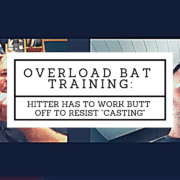

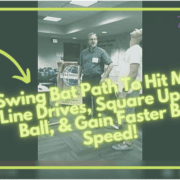



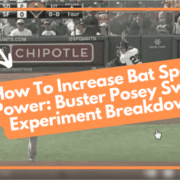
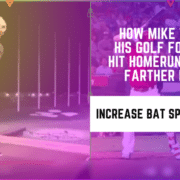
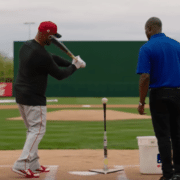



Leave a Reply
Want to join the discussion?Feel free to contribute!